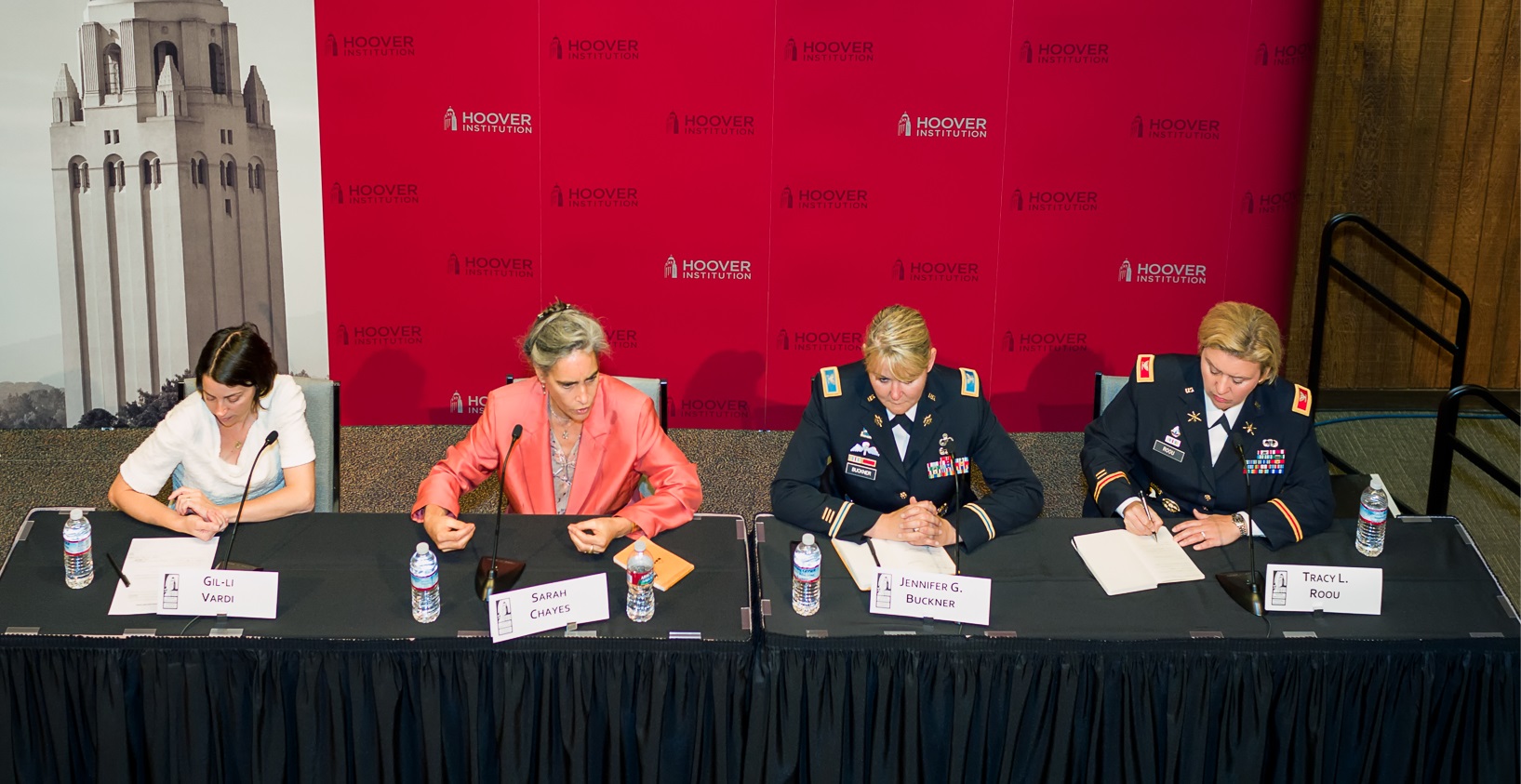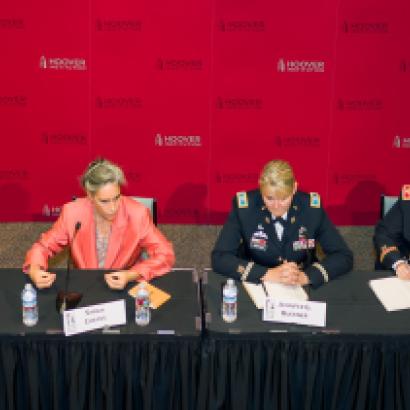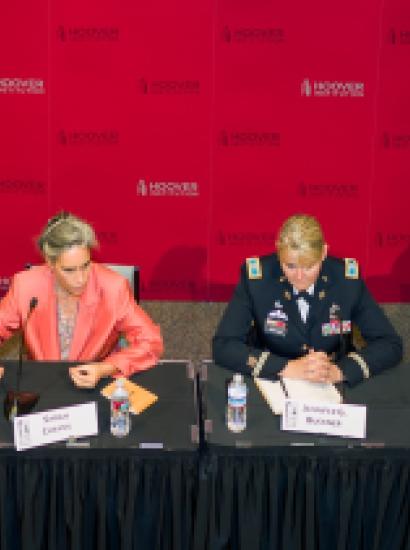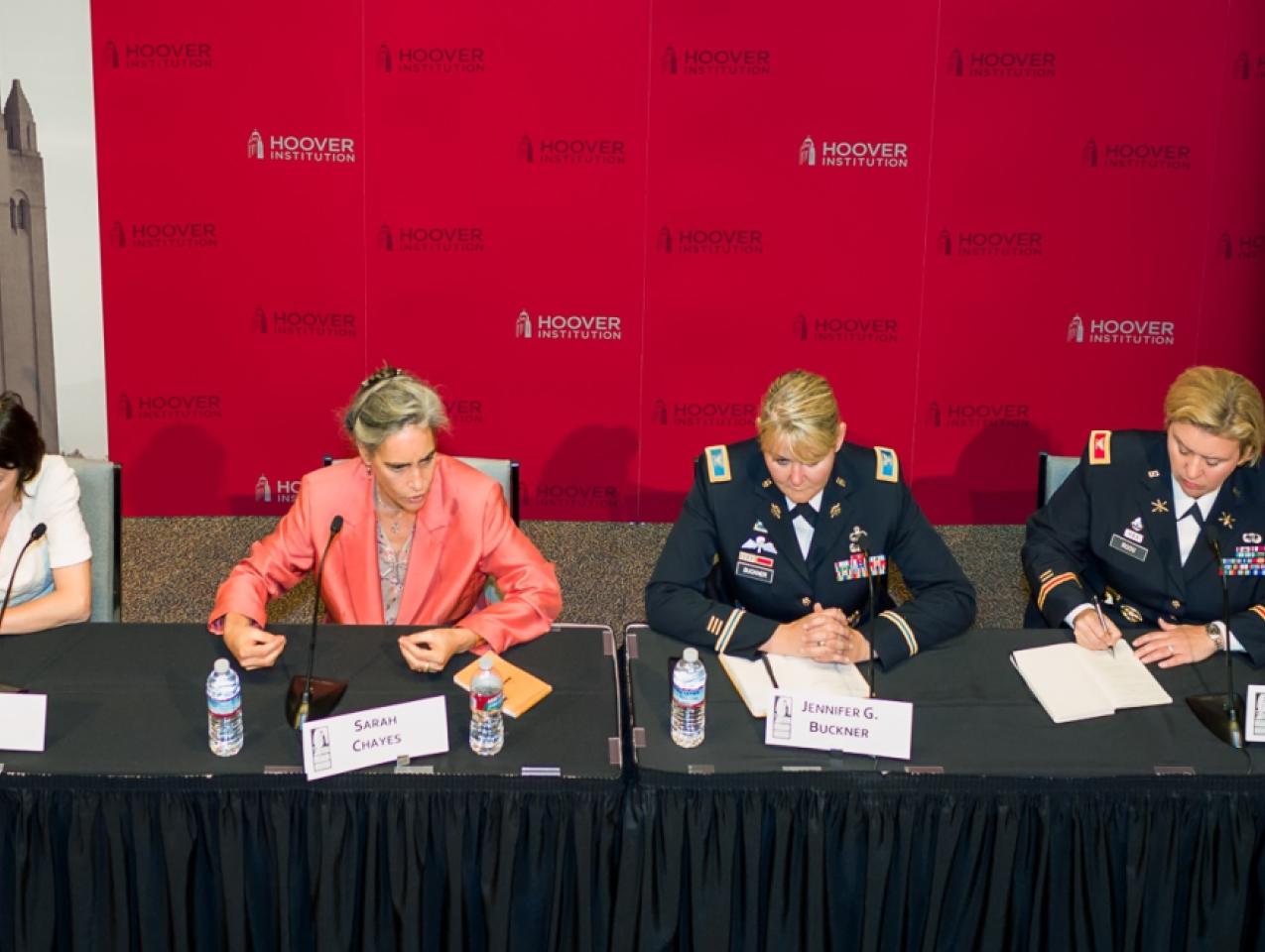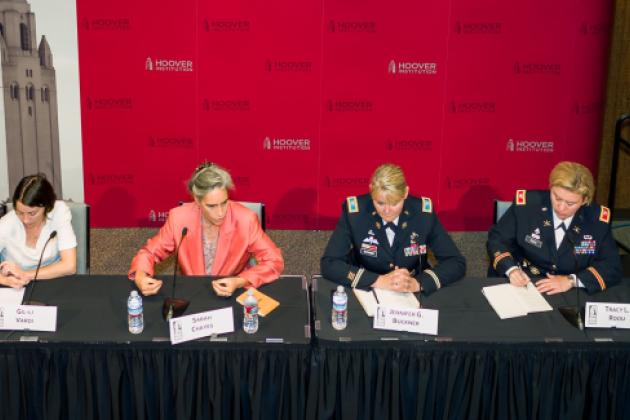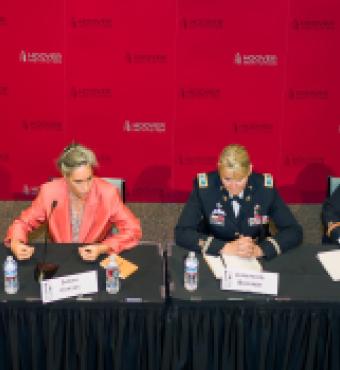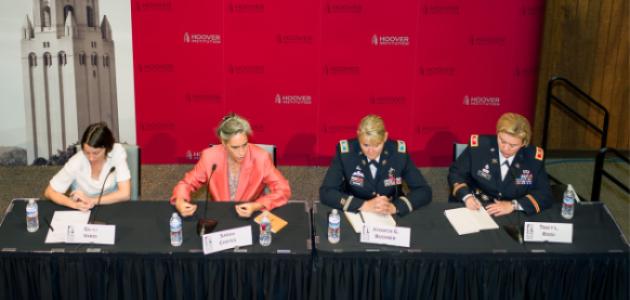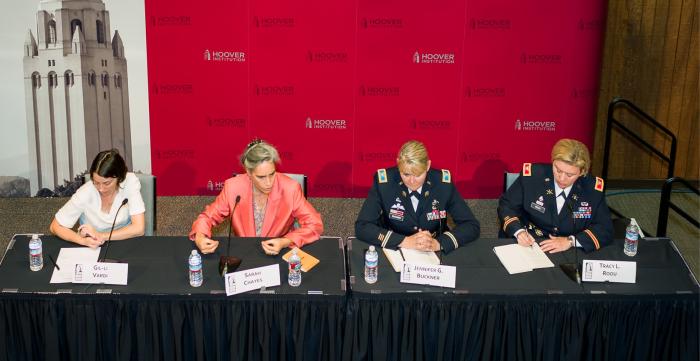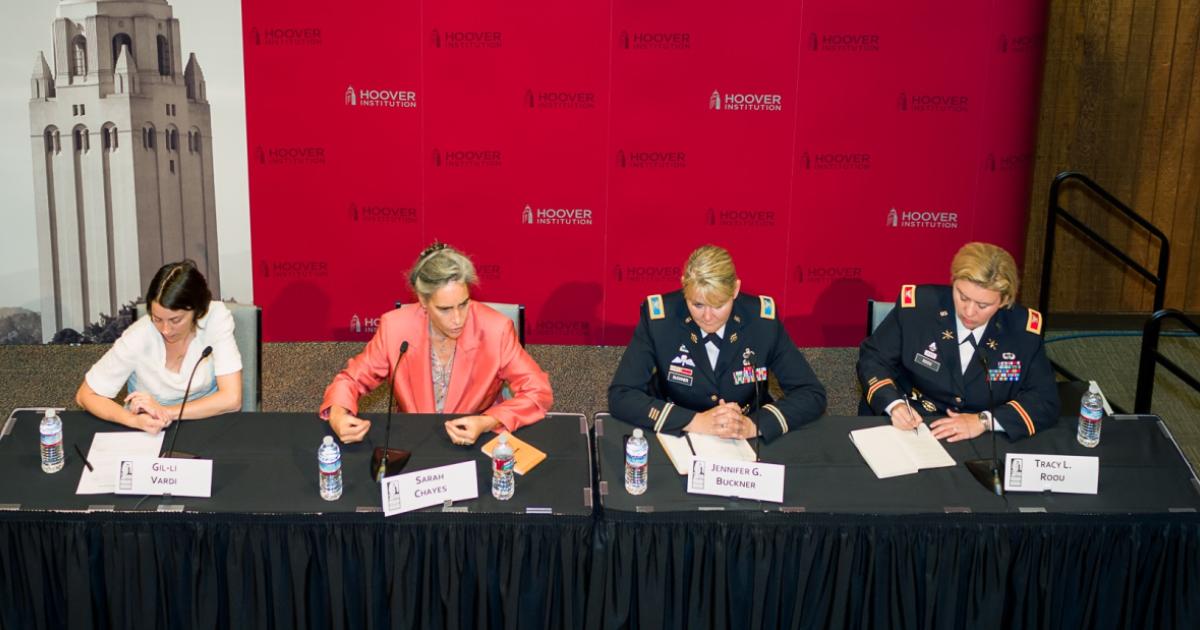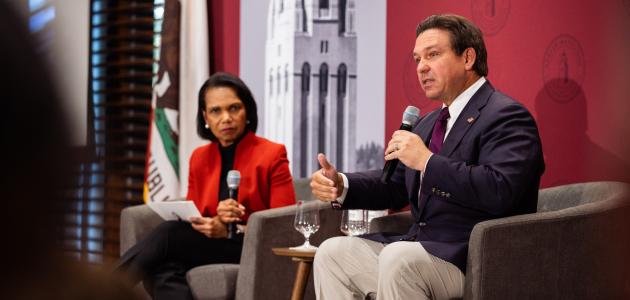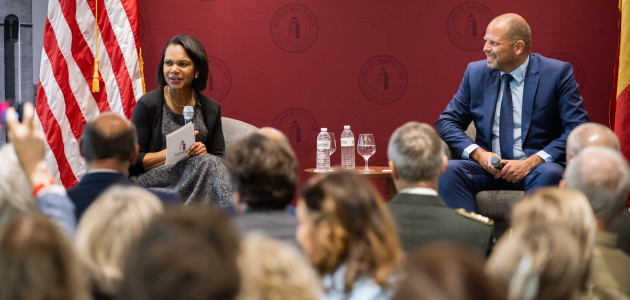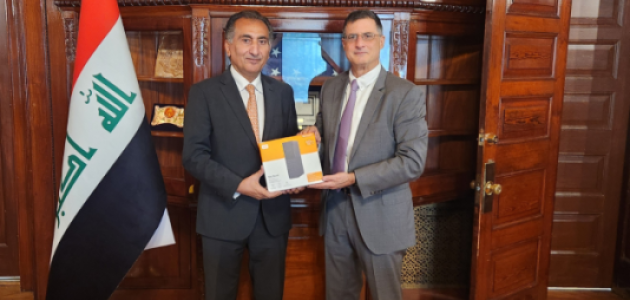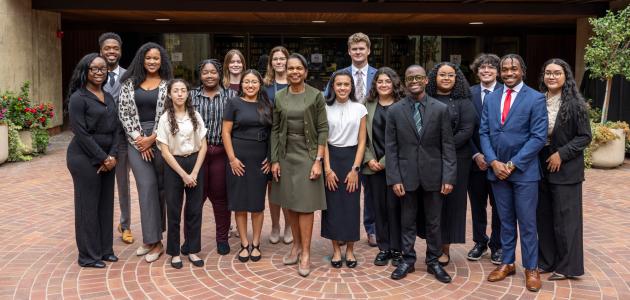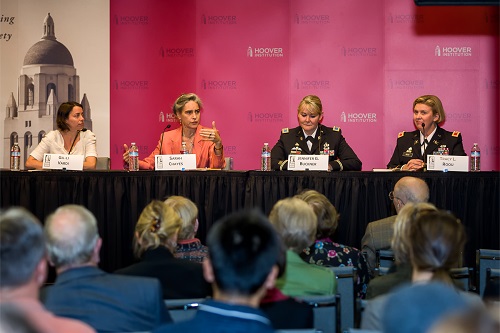
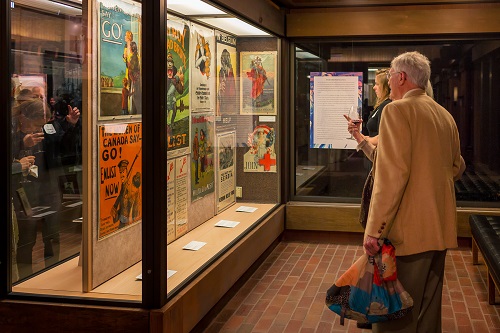

The Hoover Institution is actively remembering and probing the legacy of the First World War this year, the centenary of its outbreak. On Thursday, November 6, the Library & Archives sponsored the panel “A Hundred Years Later: Women and War Today” to discuss the current relationship of women and the military in light of that momentous conflict. The occasion for the event was the opening of a new exhibit of archival materials at the Hoover Pavilion on “Women and the Great War.”
The panel featured Colonel Tracy L. Roou, at present working in the Office of the Secretary of Defense-Policy, Colonel Jennifer G. Buckner, who heads the Army Cyber School, and Sarah Chayes, a former journalist and military adviser, now a senior associate at the Carnegie Endowment. Former Hoover research fellow Gil-li Vardi, a visiting scholar of military history at Center for International Security and Cooperation and a lecturer with Stanford's History Department, moderated the discussion. Vardi, who previously served in the Israeli Army, also shared some thoughts on her experience in the military.
The panelists agreed that gender neither constituted an important part of their identities nor posed obstacles in their work. Colonel Roou, who focuses on arms control in Russia, Ukraine, and Eurasia, has felt throughout her years in the service as part of a team on which her gender was irrelevant. Similarly, Colonel Buckner, a career intelligence officer, never had to make an issue of her gender; she was grateful for the women who had broken glass ceilings before her in the military, but her own experience was one of gender-neutral advancement. For Chayes being female actually proved advantageous in her work in Afghanistan, both as a reporter and then as an adviser to the US military. Wearing men’s clothing, she was able to interview both Afghan males and females. The male garb and, above all, that she was a foreign woman gave Chayes substantial freedom and, she believes, allowed some men to confide in her in a way they could not with their own sex. She also felt that her ability to connect with and learn from the local population gave her insights that proved valuable to army leaders. The speakers’ consensus on today’s acceptance and valuation of women in the military highlighted the immense difference from World War I, when young women could only serve as soldiers by pretending to be men.
The panelists also agreed that the future holds great opportunity for women in the military due to changes in warfare. Military intelligence and counterintelligence, already thoroughly feminized, will continue to employ females who have proven especially adept when embedded in local communities in conflict areas. Additionally, both standoff killing (as with drones) and cyber warfare, Buckner emphasized, are gender neutral. The continued normalization of women’s involvement in the military will soon be a matter of course, she added.
After a period of Q&A, the speakers and audience moved from the Stauffer Auditorium to the Pavilion for a first look at the new exhibit, which runs through March 21, 2015.
Katherine Jolluck is a senior lecturer in East European History at Stanford, with interests in twentieth-century Eastern Europe, the Second World War, women and war, women in communist cultures and human trafficking. She is the author of Exile and Identity: Polish Women in the Soviet Union during WWII.




